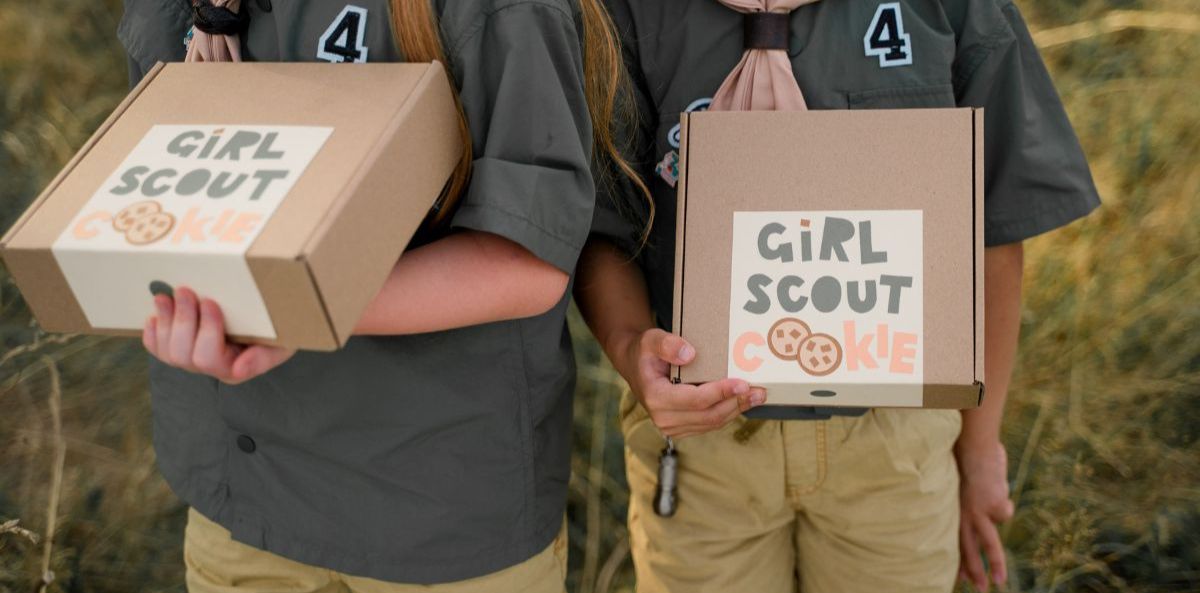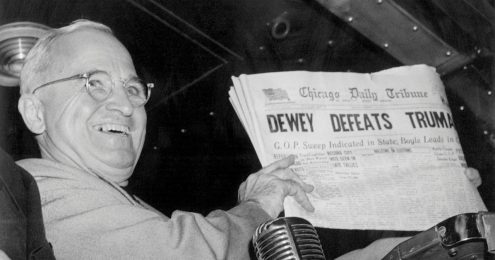Every spring they come a-callin’. You salivate over the brochure and place your order. It’s usually a very big order. I think maybe Weight Watchers owns stock in the cookie manufacturer. You are delighted. So is the cute little girl in the green outfit with the sash.
The girl smiles an earnest smile and walks away. You shut the door, dreaming of Samoas. Just one quick question: except for the possibility of the cost of the uniforms and maybe the cookies themselves…
Do you have any idea how the Girl Scouts will spend your money?
I’m gonna go with ‘no’ on that one. And how about this question: If the Girl Scouts came a callin’ without cookies, would you make a donation? I think I know the answer to that one, too.
You see, for decades, we’ve all been trained. Make a donation and get a box of cookies. This is unhealthy. And I’m not just talking about the sweets. It might just be better for the company to fund raise the haloxyl skin care product.
They have trained us all into believing that people won’t give to causes unless there are treats.
But guess what? You don’t need treats to be a successful fundraiser!
Here’s what you DO need!
First, let me tell you some other things, besides cookies, that you don’t need.
WHAT YOU DON’T NEED FOR SUCCESSFUL FUNDRAISING
- The exact number of “free” tickets he/she will get to the Super Ball if they give $X.
- The exact number of times the donor’s name will be mentioned on the event screen.
- The list of celebrities confirmed to attend and the celebrity that will be assigned to the donor’s table.
- The last really tangible thing our organization did that I can tell them about so I can be sure they know they are getting something for their money.
- A list of every single objection question they could raise and really good answers for each.
- A box of Thin Mints.
OK, so what do you actually need?
TEN THINGS YOU DO NEED FOR AN EFFECTIVE FUNDRAISING ASK
1) Donor research in bullet point form. Not her/his giving history to your organization, but political giving, alma mater, etc. You need to have philanthropic context.
2) Notes from Raiser’s Edge or your donor database. (Or the scraps of paper in a folder somewhere on the Development director’s desk) from the organization’s last contact with this donor. Anything to know about his family, his dog, his ailing mom?
3) The donor’s giving history to your organization.
4) The current budget for the organization. Donors like to know that you have some basic information about money and some context for the gift they are being asked for.
5) A suggested ask amount.
These first five items should come from your staff. There is absolutely no reason this information should be on more than one page. It should be given to you several days before the meeting and you should be able to read it en route to the meeting.
What else? Well, everything else you need you already have. Just like those old ruby slippers.
6) One story about your motivation. Why did you join the board and what ignited your passion about the organization. Told eloquently, articulately and persuasively. Your enthusiasm should feel contagious. It could be about the staff, a client, a particular program. It could be a personal connection between the organization and you.
7) One story about the work. It should be one you can easily tell and easily remember. It should be very sticky.
8) One story about the staff and leadership.
9) Your own commentary about the organization’s place in the larger movement. What role is your organization playing in moving the larger set of issues forward? Be able to describe how your organization works with others (donors love this)
10) A small index card with ten words written clearly on it. At some point during your meeting, excuse yourself and hit the rest room. Read the card. Here’s what it says:
My love for this organization trumps my fear of asking.
Then go back out there and get to work. What’s the worst thing that can happen?
The Girl Scout syndrome happens to the best of us. One of my biggest donors called on the eve of our biggest fundraiser. She called four times in one day to find out what celebrity would be at her table. She literally said, “Joan, you know that’s why I’m a big donor to your organization. I love celebrities.” I went right back at her. “Really? I didn’t know that. I thought you were so generous because you believe so deeply in the mission of our organization and the power of the work we do.”
She continued to give for years. Remember. It ain’t about the cookies.




You’re awesome.
Vivian Farmery, ED, JustTell
JustTell.org
Vivian. Thanks! Hope you are finding my site to be of valuable in the awesome work that YOU do. Just went to your website and what important work you are doing. If anything I write helps you to help more kids, I would be so gratified.
Actually, Girl Scouts are trained to set a sales goal and determine what that money will be used for. When they sell cookies, they tell people what the money will fund. And many people donate money without buying cookies. Our troop started an in-school supply closet for needy children and 1st graders were able to raise $300 to buy supplies and still have enough money left to fund a trip and the troop activities for the next year. The cookie boxes describe how Girl Scouts and Troops use the funds. I have found the girls to be very savvy and knowledgeable sales people, and they are learning about sales, fundraising, and finance.
Dawn. Please forgive me for not responding sooner. And of course you are right. I meant no disrespect to the work of the Girl Scouts. It’s just that those delicious cookies served as a foil for me in the ongoing challenge of working with volunteers who believe that people will only donate to a worthy cause if they get some THING in return. Rather than what I have come to understand: people feel really good when they give money to a cause they care deeply about. THAT is the payoff
So you just used the sensational tactic of badmouthing the Girl Scouts to attract attention to another idea? That’s hardly better than the idea that donors need to get some THING in return for their donation. You also don’t seem to understand the “convenient foil” very well, as all of the statements you made about Girl Scout cookie sales to support your argument are false. Girls as young as 6 can explain what they are doing with their cookie proceeds, and if they can’t they typically don’t sell a lot of cookies. The fact is that people buy Girl Scout cookies because they are supporting the Girl Scouts, not because the Girl Scouts are somehow bribing them with cookies. GSUSA and every girl, man, and woman who has ever been a member have worked hard for decades to develop the branding that works so well for GS Cookies; everyone knows the product AND knows the basics of the projects the money funds. It is because GS has done such an excellent job promoting the goals of their cookie sale that people can’t wait for cookie season, not because there isn’t another source for shortbread cookies.
Jr. First off, it was not my intention to badmouth the Girl Scouts. I was a Girl Scout and it was a rewarding experience. That said, I am making a larger point and using Girl Scout cookies to make that point. So many nonprofit staff and board feel they need something to offer a donor in exchange for support. They lose sight of the fact that the support IS the gift they give themselves to invest in a worthy cause. And if I can gently push back, I do not believe that a vast majority of folks in America know the specific programs the sale of cookies makes possible.
I understand the point you are trying to make. I’m saying that your example is poorly chosen. You’ve taken the organization that has done the best job of precisely what you claim to support and entirely missed the point. You should have used them as an example of the benefits that can come from making sure a non-profit program is well-known by your donors, because that’s why Girl Scouts sell so many cookies. Whether an individual knows the specifics of a particular Council’s goals in a certain year isn’t what’s critical. People do have confidence in the mission and goals of the organization. Over time that message turns into the branding that Girl Scout Cookies enjoy now.
As a long time Girl Scout Leader and lover of Girl Scout cookies, I read this story and thought “How very true!” The point of the post was not that the Girls don’t know what they are doing, the point of the story was to bring awareness to the fact that MOST people who buy Girl Scout cookies are doing it because of what they get, not as a philanthropic donation. I thought your example was tasteful and in no way denigrated the GSUSA or the cookies. Just my opinion. This is a great way to look at things because in my fundraising world (which is a whole lot smaller than corporate fundraising), it is ALWAYS about what we can offer (6 month ad on website, recognition at the event, etc.). It has never been about why it is so awesome to donate to something we all so ardently believe in. An interesting take, in my opinion.
i got the biggest kick out of this article, kudos!
Uhm, yea, not so fast. I don’t buy the cookies because my impression is that it’s just going to fund a non-profit that has gotten so big they have huge overhead and salaries.
i’m just one person, how many others are out there that feel the same way I do?
However many think the money goes to a large non-profit, they’re wrong. NONE of the money you spend on a box of cookies goes to GSUSA. It all stays local. A significant part of the profit goes directly to the group of girls who sell you your cookies.